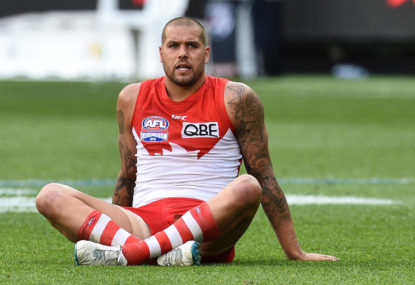What do the Hawthorn Hawks and Sydney Swans do now that their seasons are not just metaphorically finished, but on mathematical life support?
This week’s headlines were predictable. Crumbling marble pillars, rusted Spartan helmets, empires turned to ash. For Hawthorn and Sydney, languid starts to the 2017 season have morphed into a broad based view that their pristine palaces have been taken by a revolutionary new guard.
There is some truth to this. With one win between the two of them, Hawthorn and Sydney now find themselves two wins and 40 percentage points and three wins and 30 percentage points outside of eighth position respectively, six rounds into the season.
We are at ‘mathematical chance’ stages already, and as every team except the 2014 Richmond Tigers will tell you, mathematical chance is just a funny way of spelling dead on arrival.
This season has thrown up its fair share of curveballs and long tail outcomes already. Port Adelaide’s re-rise is one. Adelaide’s penchant for curb-stompings is another. For all the talk of an even season, the season ladder has already stratified into two halves; St Kilda and Essendon, with their 3-3 records but disparate percentages, looks to represent the point at which good becomes bad.
On an underlying basis, it’s clear there are three teams who’ve started the year significantly stronger than everyone else: Adelaide, Greater Western Sydney and Port Adelaide.
These three teams have percentages adjusted for strength of schedule of 145 per cent or more – a full 20 points above the fourth placed Geelong (123.6 per cent). Richmond is next, sitting on 117.5 per cent after their beat down at the hands of Adelaide, before a clutch of teams sitting around the 100 mark (+/- 10 percentage points).
Hawthorn and Sydney find themselves holding up the bottom of the table, no matter which way you cut it. Their seasons are finished, the death blow landed by St Kilda and Carlton respectively. Their failings have been examined, their strategies torn to shreds.
Six steps to tanking perfection
And so, we’re here, with two teams that had genuine and reasonable ambitions for this season, lying prone amidst their ruins. What happens next? I’d like to introduce the Six Steps to Tanking Perfection.
Tanking lacks a proper definition, at least in AFL circles. In most other global professional sporting leagues, being bad with the intent of being good again later is an accepted reality of a zero sum game.
Not everyone can be good at the same time, no one wants a competition full of 0.500 record automatons. For now, let’s run with this definition.
tank·ing
/taŋkɪŋ/
verb
In professional football, an act or acts taken that may reduce the prospect of winning games in one season but that may improve the prospect of winning games in subsequent seasons
Before we begin, it’s clear tanking doesn’t exist in the AFL.
No one goes out to deliberately lose games of football. That would be tanking. No one is deliberately awful to improve their hand at the draft, a tactic proven time after time to be folly.
That would be tanking. No one plays their best players in their affiliated state league team when they’re fully healthy. That would be tanking. And really obvious.
But do teams do some, or all, of the things described below? Yes. That is tanking. But it’s not. Look it is complicated, OK.
Talk a good game
The first step is to set out a narrative, or tell a story. Perception is everything. Ideally begin to spin a web at a post match press conference following a surprise or significant loss, when the pain is most raw, emotions are high, and the press pack is asking the right kind of questions.
If your team stinks, say that you need to make “drastic changes”, “significant changes”, or “catastrophic changes”. The key word here is changes. Change is a must. The team can’t possibly continue to do what it is doing now. It can be tactics, personnel, or both. This gives you license to start throwing science at the wall.
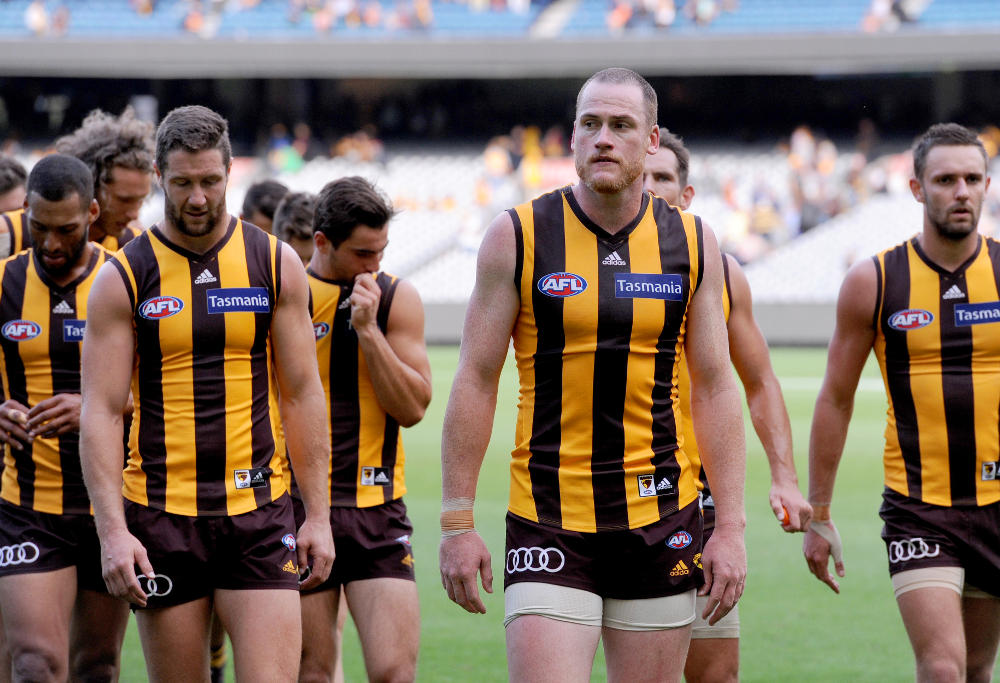
If your team is beaten up with injuries, say “the boys are tired”, or the more vague and open-to-interpretation “it’s a long season”. The implication of this is your players are carrying all sorts of niggles and injuries, some of which require surgery to fix. It also opens the door to strategic resting of players, particularly in the early part of the season.
What’s important is consistency. Once you’re talking about catastrophic changes or that your team are battle-weary, there’s no going back. The tank is on.
We saw Hawthorn coach Alastair Clarkson begin to spin a web in the weekend just past. After evoking the change narrative, Clarkson goes all in. “We’ve got to try and find ways, even in-season, when things aren’t going your way, to change things up. Whether that’s an injection of younger players, whether that’s a change of game style, whatever it is, we need to try to find different way to go about it, because we just can’t continue to accept mediocre performances like we got today.”
Sydney coach John Longmire was circumspect in his press conference, but was more down the line on Melbourne radio on Sunday. “We’ll continue to do that [play young players], keep strengthening up our list and getting experience into the players that we need to be but also, at the same time, try and be competitive. While we’re getting games into these young blokes we haven’t got the balance of being competitive right yet.”
Try that positional shift you’ve been whiteboarding
Ever wanted to see how your bullocking inside midfielder would go as a half forward staple? Or how your high marking defender would fair as a key forward? Now you’ve opened up the change narrative, the world is your oyster.
Again, this isn’t about being awful at face value. Free of the shackles of the current year’s ladder, the opportunity to experiment and potentially find something to take forward.
Admittedly, this is a particularly difficult manoeuvre to pull off in isolation after the much-publicised shenanigans at Melbourne during their weakest moment.
This step isn’t for everyone. But in the case of the Hawks and Swans, there are some interesting opportunities to see what’s possible.
In the case of the Hawks, their young key and near-key position stocks are deep and still malleable. Ryan Burton looms as a great player, but Clarkson and company appears to be uncertain as to where he fits in to the team in the long term.
Tim O’Brien, Kaiden Brand and Daniel Howe should be given time to play forward and back, and James Sicily should be given an extended run as Jarryd Roughead’s apprentice up forward.
Luke Breust as a rangey half back is an interesting proposition, as is Cyril Rioli as a more full-time midfielder. These are all defensible moves which could unearth some interesting angles for the Hawks going forward.
For Sydney, Callum Mills should transition to the midfield post-haste. His destiny is as an Andrew Gaff-styled outside ball user, providing meterage and incisive kicking across the ground. Mills’ high marking is a bonus.
The Jake Lloyd-Zak Jones experiment (30 and 21 disposals per game, respectively) should continue – if this pair are already showing an aptitude for accumulation in Sydney’s midfield, imagine when the blue chip trio rediscover their true powers. Isaac Heeney should start every centre bounce inside the square.
Exit stage left, celebrated veterans
Another clear decision, particularly for older teams, is to begin an orderly process of veteran retirements. Knowing where the team sits early makes this a much more pleasant task than it can otherwise end up becoming (see Melbourne, 2016 North).
Not every team has to do this, of course. Up and coming teams may not have any veterans to ship off to the football glue factory. That’s likely the case for Sydney, who already have one of the youngest lists in the game with nary an old stager in sight (save Jarryd McVeigh, for whom the writing may already be on the wall). But for the Hawks, some decisions have to be made.
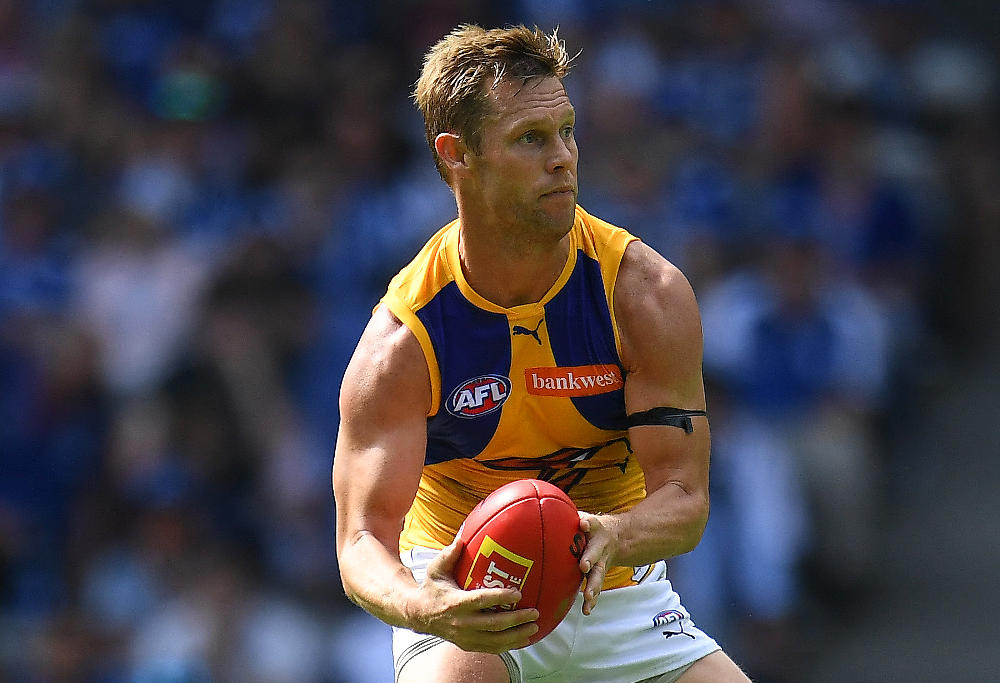
Josh Gibson has had a stellar career, particularly for a player who joined North Melbourne off of the rookie list, and was traded to the Hawks for draft picks just as the team was about to take off.
He simply looks like many 33-year-olds look in a game chock full of guys in their mid-20s: a step behind the pace of the game, a half second too slow in making decisions. This is surely his last season, and so Hawthorn’s hand will be forced soon. He’d still kick my arse and I’m 27, so I’m not comfortable making this judgement, but such is life as a professional footballer.
Likewise, decisions have to be made about the futures of Luke Hodge and Shaun Burgoyne, although this are far more complicated given both have been well performed throughout the season to date. If Paul Puopolo’s sluggish start carries forward, he may find himself back at Box Hill through the end of his deal in 2018.
Get an excellent surgeon on retainer
Send everyone off for surgery. Feeling a bit tight in the groin? Must be osteitis pubis. Surgery required, out for the season. Dislocated pinky? It requires surgery, and you’re out for the season. Developing male pattern baldness? Yeah yeah! Surgery, out for the season.
In reality, every single AFL player carries some kind of nagging niggle or injudicious injury through the year. If the tank is on, why bother? Every season bar the immediate season is the end game here, and getting players in their best possible condition must be the goal.
If that requires surgical intervention, which has the added side effect of sidelining a player who would otherwise be a strong contributor to your team, then great. Pull the plug early. Teams are already expert at this, with a rash of season-ending surgery press releases scheduled for the two thirds mark of the year.
Both teams should be judicious in their application of this step, but particularly Sydney, who have a bucketload of fragile blue chip talent on their list. If Lance Franklin’s knees so much as click when they shouldn’t click, he should be pulled immediately.
Ditto Kurt Tippett and any of his body parts. Dan Hannebery and Luke Parker have contact injury histories that should be managed – particularly Hannebery, who is seemingly already held together by medical tape.
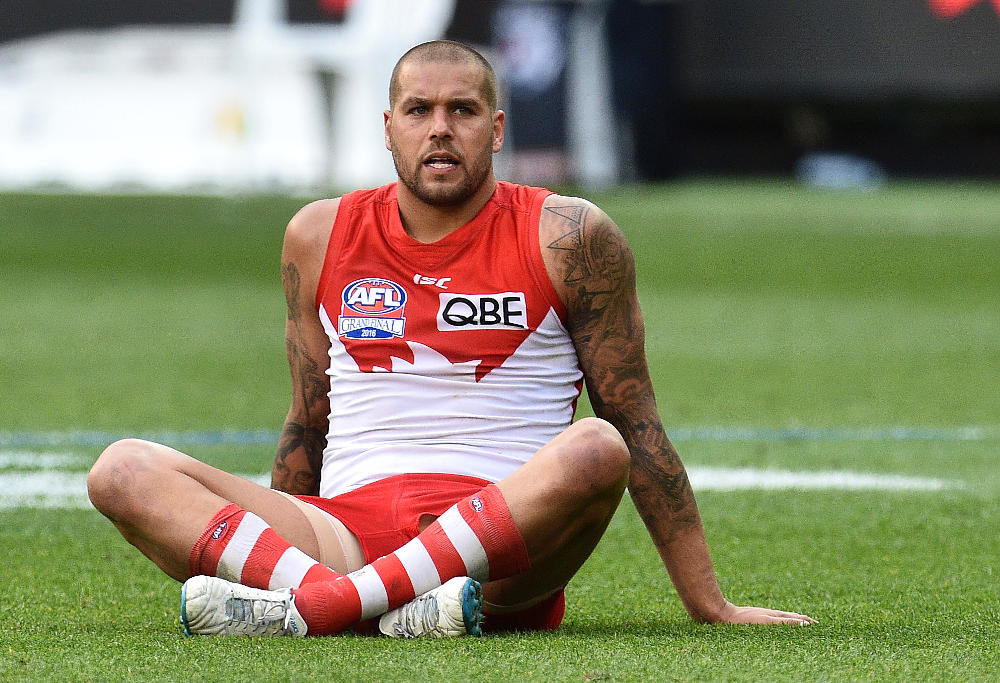
Swap mature role players for young role players
This is “play the kids” without the overt tanking taste being left in everyone’s mouths. For most teams, there are stars and there are scrubs. In a situation where forward-looking measures must be taken, the scrubs should instantly be replaced by younger scrubs.
It’s a little different to the managed exit of loveable, decorated veterans, because often the scrub has played less than 100 games for the club in a mostly thankless roles at the bottom of a midfield rotation or in a forward or back pocket.
Scrubs are the low profile “Omitted” types. They are the known quantities, the steady hands at the wheel who a coach can rely on to execute the game plan and not stuff up with any regularity.
A tanking team can’t abide them. They useful to contenders and rising teams, but once you’re not winning, those spots must be afforded to younger players as a way of seeing what talent is available on the current list.
The scrubs and role players are known quantities – you know what you’re going to get. Draftees and low-experience players have untapped upside potential.
Sydney have already done this in the natural order of things, with six players making their debut this season due to injury and absence. That goes with the seven new Swans unveiled last year.
Sydney have no issues on this front as it stands, but they must stay the course. Jeremy Laidler and Dean Towers should be kept behind the ‘Break In Case Of Emergency’ glass for the rest of this year.
Hawthorn, once more, have an interesting set of choices. There are a range of players on the cusp of journeyman status, but whom have only limited AFL experience as a result of the (correct and 100 per cent vindicated) choices made in years past. Brendan Whitecross,
Ryan Schoenmakers, and even Taylor Durea are conventional role players who should be spending most of their season in the reserves. But for Will Langford (52 games), Ricky Henderson (90 games), and Billy Hartung (45 games) the decisions are much more nuanced – particularly so for Henderson, who is the seventh oldest player but has just been bought into the fold.
Dangle the trade bait
Subbing out role players must be balanced with maintaining opposition interest in potentially surplus players for trades at the end of the season. Remember, the important theme for tanking is change, and one of the most effective ways to facilitate change is through the annual AFL meat market.
Hawthorn are without their first round pick, after trading it to St Kilda to get their Jaeger O’Meara and Tom Mitchell deals over the line in the same year. We will talk about this in some depth later in the year, but for now this remains a solid trade as far as I’m concerned – the Hawks punted a whole draft and their first pick in a second draft to land two excellent players which suit their needs hand in glove.
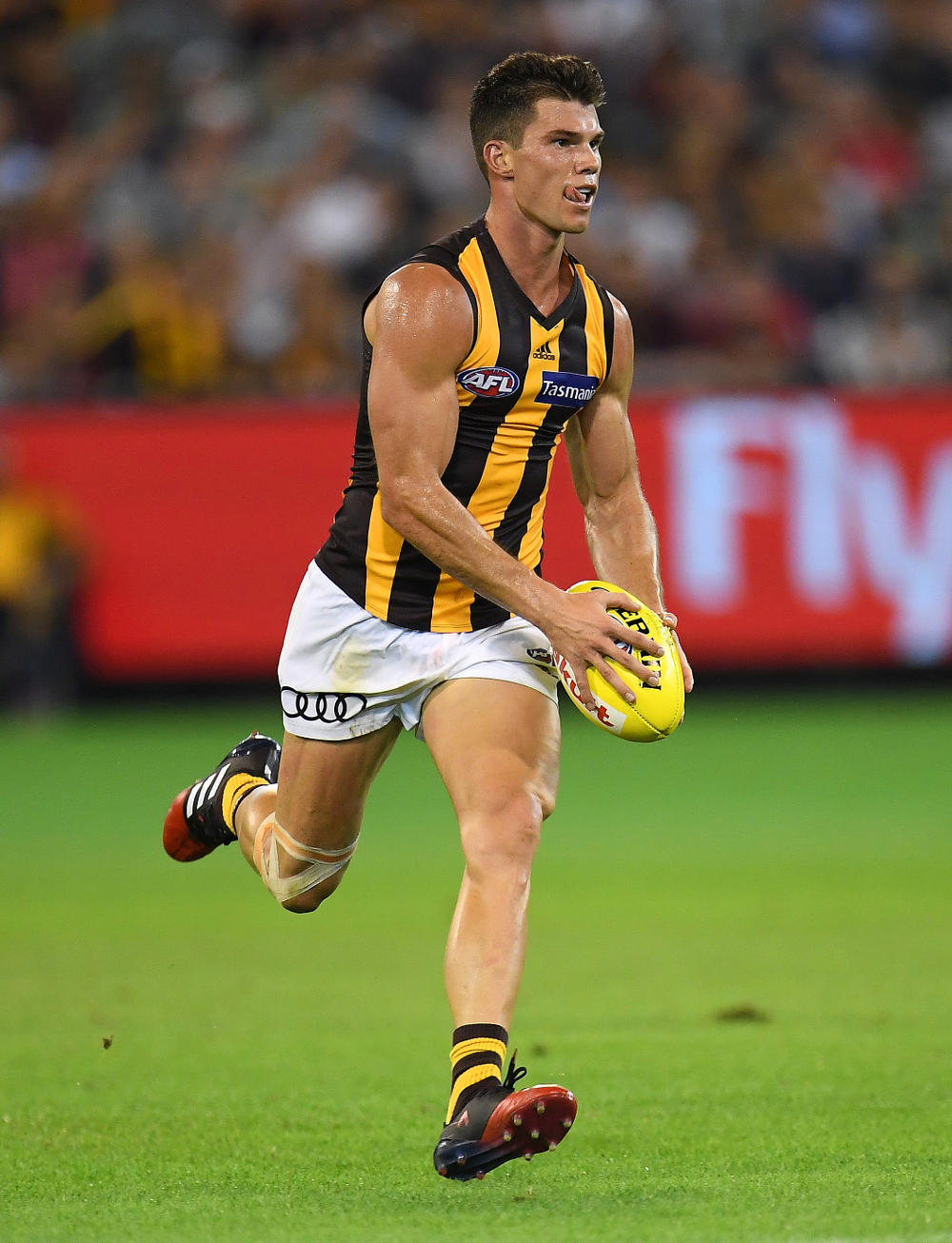
This obviously complicates matters, because it’s one trade chip the Hawks have already spent. It leaves established players as their most obvious path to more draft picks or deals to land other established players that more fit their needs. Again, we’ll talk about Hawthorn’s off season at the appropriate time.
Sydney are in a position where they don’t need to worry about trading established talent. Their pantry is overflowing; depending on their academy stocks they may wish to acquire more lower end draft picks to help pay for them.
Commit, no matter what happens in season
Once you’re on the tanking path, it requires absolute commitment. Sydney might end up with 10 or 11 wins from their remaining 16 games, based on a return to form from their best players and a softer draw in the months ahead.
The pull to chase that extra win or two that could materialise if one of the four on-field rules is broken is strong. But it matters not; once the course is charted, it must be followed to the end.
Ditto for the Hawks, although the extent of their predicament suggests there is no alternative. A process which begins at a post-match press conference in April must continue through to the end of August – or beyond, if a multi-year renovation is required – lest you be accused of having a muddled strategy and no plan for the future.
We’re in uncharted waters here. At no point in my time geeking out to the game we love have two highly credentialed teams fallen so far so quickly.
They will be back – Hawthorn, Sydney and Geelong are the new big three according to some big headed AFL columnist – and perhaps sooner than you think if they obey the Six Steps to AFL Tanking Perfection.





























































































